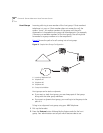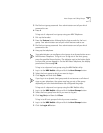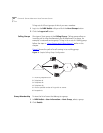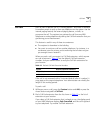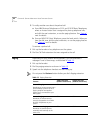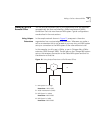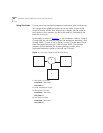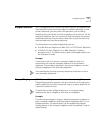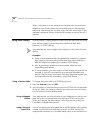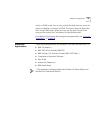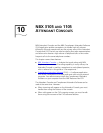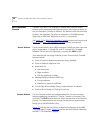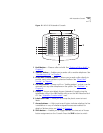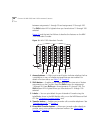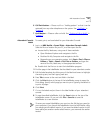
98 CHAPTER 9: GETTING MORE FROM YOUR TELEPHONE SYSTEM
When a call comes in to the manager on that extension, the assistant’s
telephone rings 4 times before the call audibly rings on the manager’s
telephone. Even during the first silent rings, the line’s status light on the
manager’s telephone flashes, allowing the manager to answer the call if
required.
Using Pulse Dialing In some locations, analog telephone users must dial telephone calls using
pulse dialing instead of tone dialing (also called Dual Tone Multi
Frequency, or DTMF, dialing).
Your administrator must configure the Analog Line Card ports for pulse
dialing.
Examples:
■ Some of your telephone lines are provided by a telephone company
that supports only pulse dialing while other lines are provided by a
different telephone company that supports DTMF dialing.
■ Your organization’s telephone service provider offers low-cost,
pulse-dialing-only service.
■ In some situations, you must switch to DTMF dialing during a call. For
example, if your call is answered by an automated attendant that
requires that you enter information from your telephone keypad, you
must typically enter the information using DTMF dialing.
Using a Feature Code To change from pulse dialing to DTMF during a call:
1 Press the Feature button and 891.
2 Your connection is switched from pulse to tone (DTMF) for the remainder
of the call. When you hang up, the port you were using on the Analog
Line Card reverts to pulse dialing mode.
Using a Mapped
Button
Your administrator can map a button on your telephone so that you can
press the button to change from pulse dialing to DTMF during a call.
When you hang up, the port that you were using on the Analog Line
Card reverts to pulse dialing mode.
Using a Personal
Speed Dial
You can configure a personal speed dial in the NBX NetSet utility to dial a
number in pulse dial mode and then to switch to DTMF. Use the left
angle-bracket character (<) in the NBX NetSet utility as the command to



